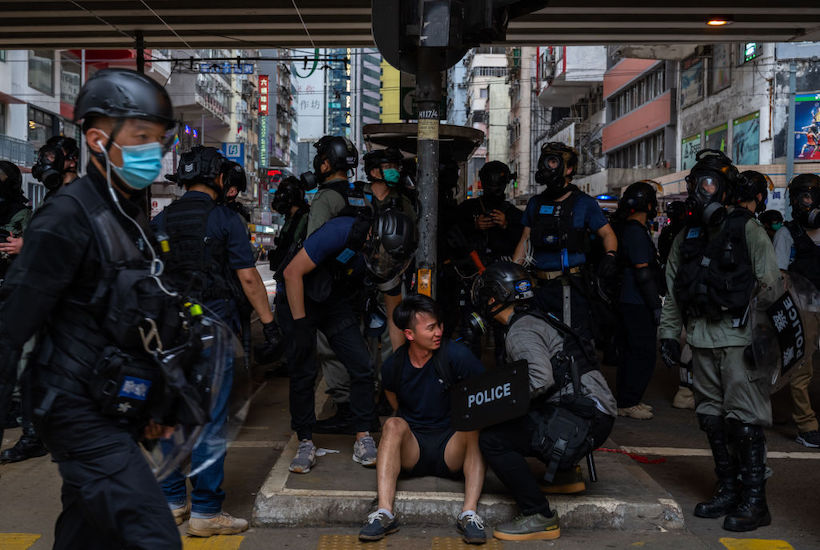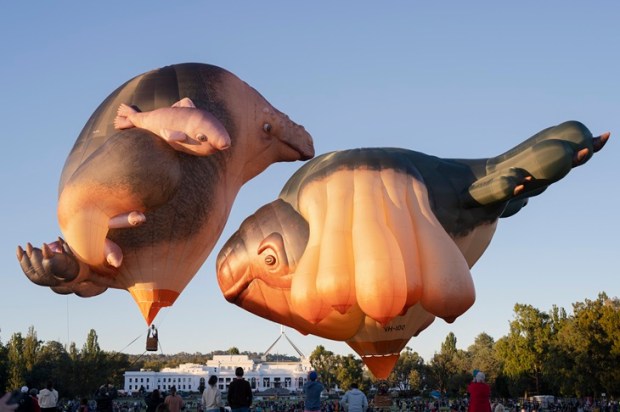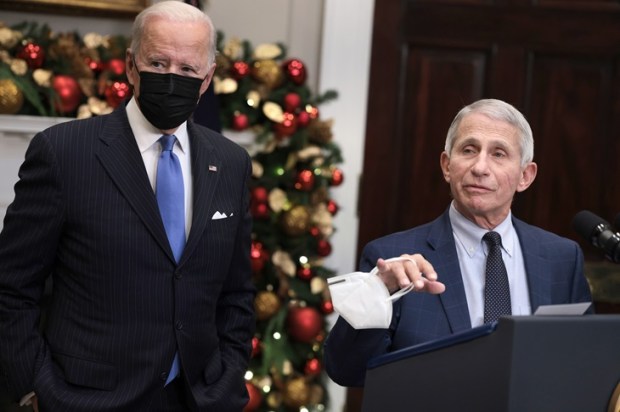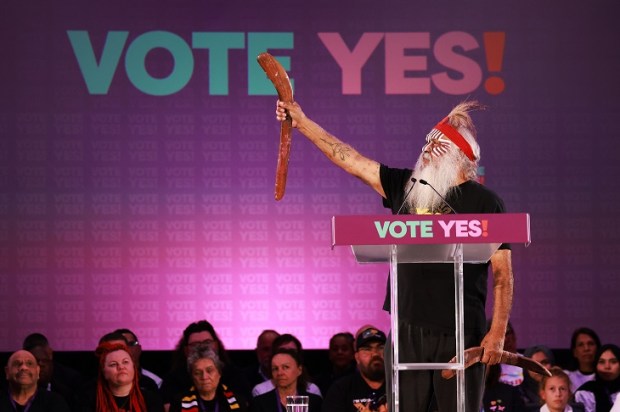As the crackdown against pro-democracy protestors and voices of dissent in Hong Kong have become more violent and intense, we must no longer turn a blind eye to the blatantly aggressive Chinese government. Thousands of articles have been written about the misconducts and brutality of the Hong Kong Police Force and the Chinese Communist Party’s encroachment of civil liberties in Hong Kong, but few have investigated the language used by actors of the establishment against Hong Kong citizens. The animalising and dehumanising language used by both members of the Hong Kong and Chinese administrations and the state media turns out to be more alarming than previously thought and can potentially be a precursor to mass violence and even genocide in the city. According to Gregory Stanton, the founder of Genocide Watch who came up with the “Eight Stages of Genocide”, genocide begins and progresses in systematic stages that are “predictable but not inexorable.” The fourth stage of which is “dehumanisation,” in which “one group denies the humanity of the other group” where “members [in the other group] are equated with animals, vermin, insects, or diseases.”
Video footage after video footage shows the police force, once deemed Asia’s finest, yelling “cockroaches” at protestors, first-aiders and journalists alike during protests. In a clip posted in September, a police officer threateningly pointed a baton at an elderly protestor and called him a “cockroach,” ignoring the pleas of a reporter following close behind who was calling out the officer’s disrespect. In a clip uploaded to Twitter in November, a riot police officer shouted at protestors on a bridge before unleashing tear gas, “You are not even worthy as an animal. Remember, you are not human, you are a cockroach.” As recently as in May this year, riot police shouted insults like “damned cockroaches” and “may your whole family die” at passersby and journalists during their crackdown on a peaceful singing event at a shopping mall.
Those in charge of various factions within the police are open about their support and authorisation of such language. In a statement in July, the chair of the Junior Police Officers’ Association said that protestors could not be called “human” and that “such low lives can only be called by the name of the insect which is most afraid of light— cockroaches.” In a letter in August 2019, he again denounced protestors as lawless and abhorrent, saying they are “no different from cockroaches.” In an interview in December 2019, a senior member of the Hong Kong police’s public relations unit tried to justify the officers’ use of the word “cockroach” in labelling anti-government protestors by saying that it is a compliment and a term of endearment. He even urged that the audience to look at the term positively, “Aren’t cockroaches full of life and vitality and can survive in harsh conditions?”
Aside from the police, the term “cockroach” is also used malevolently by other parties against the protestors. Nationalist sympathisers of the Chinese Communist Party often carry signs bearing the words “put out cockroaches, everybody’s responsibility” during pro-Beijing and pro-police force rallies. Chinese state media, such as the Xinhua News Agency, has published cartoon propaganda on Facebook painting protestors as cockroaches violently trampling on innocent citizens and threatening their lives and property.
Aside from “cockroach,” another term was recently coined to address the Hong Kong protestors — “political virus.” On 5 May 2020, the Hong Kong and Macau Affairs Office, mainland China’s top political office overseeing Hong Kong, said in a statement that protestors are a “poisonous” “political virus” that needed to be eliminated. This is not the first time Beijing has used the word “virus” to describe a body of people. Leaked Communist Party documents exposed by the New York Times state that the Uyghurs in Xinjiang are “infected by unhealthy thoughts” and that “freedom is only possible when the ‘virus’ is eradicated”. The terms were used to justify the necessity of mass detention and re-education camps which are used to remove and curb the spread of ideological diseases and to ensure the Uyghurs’ adherence to national ideology. China Daily, another mouthpiece for the Chinese Communist Party, has quickly picked up on the term and pushed such propaganda by painting Hong Kong protestors as both infectious virus and cockroaches and portraying the police as valiant defenders of civil society.
Government actors and state media comparing Hong Kong protestors to “cockroaches” and “political viruses” is alarming because history tells us that likening people to animals has often been a precursor to mass violence and genocide. Labelling people as disgusting animals or as infectious viruses presents them as a danger or pestilence to human society and engender a climate of fear and hatred. Fear or anger-inspiring images showing the alleged threats posed by the pestilential target group justify killing and extermination. After all, it may be hard for us to kill a fellow human being, but we step on insects without compunction and we do not hesitate to try and get rid of diseases. Once someone is dehumanised, it is easier for us to deny them the respect and compassion that we typically reserve for other human beings and it also relaxes our instinctive aversion for aggression and violence.
This calls to mind the atrocities committed against Tutsis in Rwanda and the Jews in Nazi Germany, both instances in history where large groups of people were collectively labelled as vermin and diseases, and where derogatory language gradually gave way to genuine dehumanisation and the perpetuation of physical violence and finally leading to the eradication of whole societies and ethnic groups. Rwandan Tutsis were the victims of massacres by the Hutu-led government. The term inyenzi — cockroaches — was widely used by commentators in anti-Tutsi media, such as the Radio Television Libres des Milles Collines, as the keyword of insult for Tutsis and served to characterise all Tutsis as a threat. Victims of the Rwandan genocide are later estimated to be more than 800,000. Meanwhile, Jews were often labelled by the Nazis as lice that destroy nations— Joseph Goebbels, Reich Minister of Propaganda, advocated for the need of a “complete elimination” of Jews as a “question of state security”. Anti-Semitic propaganda was published comparing Jews to a deadly disease that needed to be “cured” with the caption saying “Tuberculosis, Syphilis and Cancer are curable. It is necessary to finish the biggest curse: The Jew!” Comparing Jews to a deadly parasite that would eventually attach themselves to German organisms made it palatable for Germans to fight and destroy the Jews in order to defend and protect themselves. Much of this dehumanisation led the German public to become malevolent bystanders and to participate in the subsequent genocide to eradicate the dangerously “infectious” Jews.
Metaphor can be a powerful form of re-labelling as it defines the pattern of perception to which people respond. To name a group as vermin is, by implication, to call for their cleansing. Cruel deeds of extermination will not only thus become permissible, perpetrators of violence will also see themselves as the innocent and injured party affected by the pests’ provocation and will even feel self-righteous while exterminating the other as they feel that they are only defending themselves. Dehumanisation has the function of decommissioning our moral sentiments. In dehumanising a group of people, the victim group would be excluded from the circle of mutual moral obligation— the target group would become a problem demanding immediate action, where a biological solution, such as killing or extermination, becomes a necessity.
A terrifying element of the situation here in Hong Kong is that dehumanisation rhetoric is wholly sanctioned by the local government and also by the Chinese Communist Party, as both state media and leading representatives of the governments use these dehumanising terms without any restriction, consequence, or punishment. The exterminationist animalisation rhetoric has become increasingly widespread and normalised within the Hong Kong society when targeting anti-governmental protestors. This is not to say that Hong Kong is on the verge of genocide, but it does not mean we can take the situation lightly or turn a blind eye. Turning on dehumanisation won’t immediately lead to massacre, but it will definitely make life infinitely worse for those who are targeted and marginalised. The animalistic representation of the ‘enemy’ alleges that they pose a serious threat to the fabric of the perpetrator society in a way which necessitates their destruction as legitimate, necessary, and as self-defence. Given how this rhetoric is used within the Hong Kong society in such a systematic and common fashion, coupled with the increasingly violent crackdown of protests and dissent in Hong Kong, we must recognise it as a warning that even more mass violence and oppressive crackdown would follow.
Sophie Mak is a law and literature student at The University of Hong Kong, currently researching the relationship between the usage of dehumanising language and genocide. She is a digital verification researcher for Amnesty International monitoring the anti-government protests in Hong Kong whose work has appeared in publications such as Hong Kong Free Press and The Diplomat.
Got something to add? Join the discussion and comment below.
Got something to add? Join the discussion and comment below.
Get 10 issues for just $10
Subscribe to The Spectator Australia today for the next 10 magazine issues, plus full online access, for just $10.


























Comments
Don't miss out
Join the conversation with other Spectator Australia readers. Subscribe to leave a comment.
SUBSCRIBEAlready a subscriber? Log in